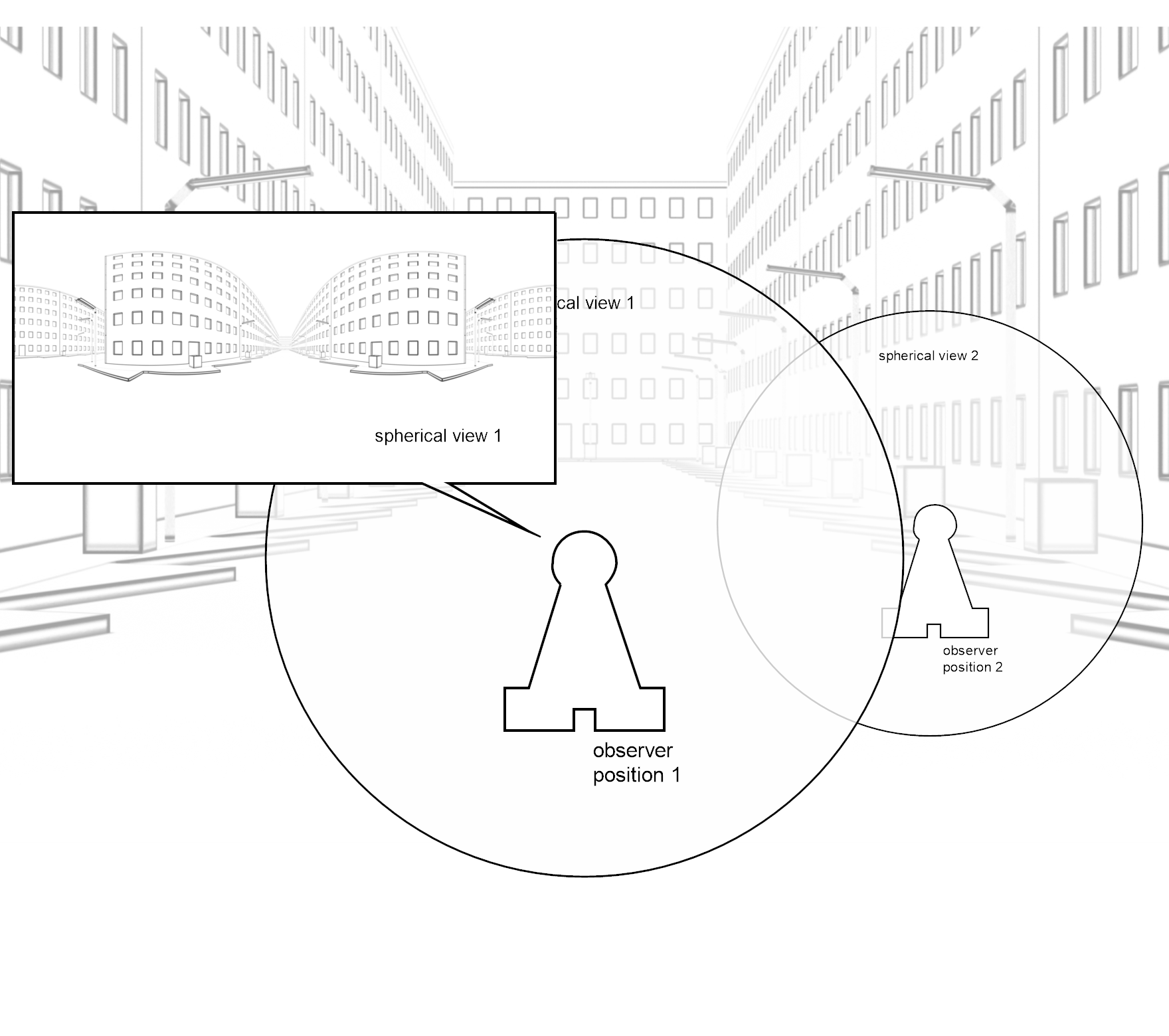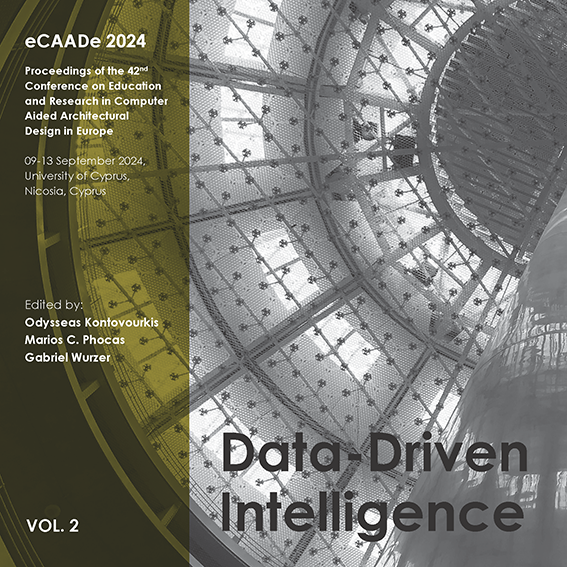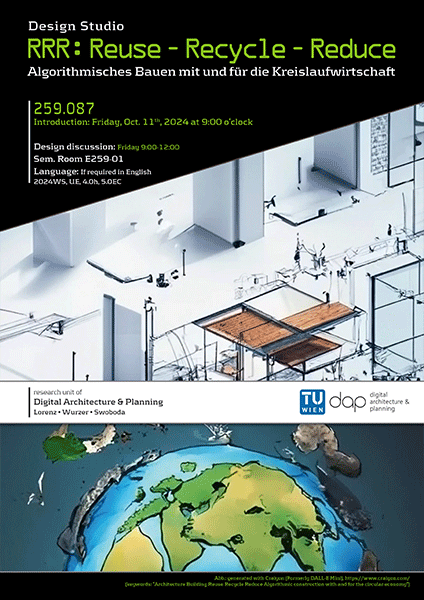7.1 The Size and the Quality of an Image
First of all it is necessary to remember that the image or the plan of which the fractal dimension is finally calculated only represents a simplification of the real object, e.g. of the front of a building. In this connection plans of smaller scales generally display more details of the building than those of bigger ones. This is quite similar to the distance of the observer to the real object: if one stands far away, something can be hardly recognized, except one uses a pair of glasses - compare picture 28. Getting closer, which means increasing the scale of the plan, the details become visible - certain details can only be identified from a certain distance or scale on. Thus translating an object into a plan first of all means to define the distance- or the scale-range - with the aid of the biggest and smallest recognizable detail. Using box-sizes beyond this range, in connection with the measurement of the fractal dimension by the box-counting method, this leads to falsified results - no additional details of the real object, the building, are included into the calculation because the plan does not contain them.
Looking at the Koch curve and other mathematical fractals this would mean that, depending upon the distance they are observed from, the number of iterations can be defined. E.g. from far away maybe only the first three iterations will be distinguishable, and all iterations from then on do not seem to change the image any more. Up to a certain scale the calculated box-counting dimension will give some conclusion on the fractal dimension of the real object. But then, if too small boxes are used for measurement, that is the scale-range of observation remains too low, the image will quickly turn out to be a one-dimensional line. From then on no additional details can be picked up because the image does not contain them - the length of this curve is limited in contrast to the real Koch curve.
Some other influences represent the quality of the image itself, which may be translated into the language of the computer by the number of pixels per inch - high or low definition. "Quality" also means how many details are getting lost only because of the preparation of the plan - by scanning and after-treatment - and not because of the distance, that is scale. Then the interpretation of the wall of floor plans, whether they are painted black, white or grey, influences the results of the measurement. But also the contents of the plan changes the fractal dimension: elevations may also display the environment - natural or built one -, floor plans may contain tiles on terraces and/or sanitary fixtures and other equipment - some closer look at this theme can be found at picture 81. Such differentiations are taken into consideration when analyzing house types in chapter "9Statistics". In general images that represent elevations and floor plans of buildings have to be similar in the way they pick up details, in their quality and in their scale if they should be compared with each other.














